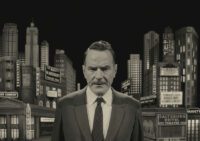The countdown to July 21 is speeding faster than a pink convertible. The driver is writer/director Greta Gerwig and the destination is the highly anticipated Barbie movie. As the first live-action movie in the Barbie Cinematic Universe (BCU), there are big, high-heeled shoes to fill. But, every stunning soundtrack release and new glimpse of Margot Robbie in pink gingham digs deeper into BarbieLand as Gerwig’s metaphor for leaving girlhood and becoming a woman.
Barbie has often been dismissed as oversexualized and shallow, but those who grew up playing with the doll, she is so much more. She represents fun, youth, and the innocence of femininity—dressing up without the pressure to impress anyone or wanting to be the president or a princess and still having adults validate those dreams. In the recent Tik Tok reclaiming of 2000s hyper-femininity, there’s been a nostalgic trend of rewatching the animated Barbie films. Gerwig’s Barbie seems as though it will honor Barbie’s legacy as a career woman and fashion icon while also acknowledging some of the doll’s criticisms (after all the film is for those who love Barbie and those who hate Barbie)—like a perceptive love letter as opposed to a simple parody.
Gerwig’s adaptation is already resonating with fans, inspiring an active cult on twitter with updates, memes, and general excitement. Last month, podcaster Klaudia Amenábar posted an astute statement that went viral:
i think we should treat the barbie movie like the MCU and make men watch every barbie animated movie first before seeing the live action one like? you havent seen barbie nutcracker? you dont know BIBBLE??? ok fake fan
— klaudia amenábar (@kaludiasays) May 26, 2023
“i think we should treat the barbie movie like the MCU and make men watch every barbie animated movie first before seeing the live action one like? you haven’t seen barbie nutcracker? you dont know BIBBLE??? ok fake fan,” Amenábar tweeted.
Because Barbie doesn’t need anyone else knocking her down. So often films that are made for girls, women, and queer folks aren’t viewed earnestly by the film bro variety of men. Films seem to only be considered true cinema if they are some combination of dark, sad, and serious. But, what’s wrong with fun and campy? And god forbid, a little color? If the Marvel Cinematic Universe can be studied and respected by critics, Barbie deserves the same attention.
If you weren’t lucky enough to be a kid in the early 2000s and experience the joy of playing the the coordinating doll while watching a Barbie movie, here is an abridged guide to the Barbie Cinematic Universe including the origins of Bibble—the man(?), the myth, the meme.
Barb-ifying the Classics
While Barbie did make an appearance in Toy Story 3, Mattel might have gotten inspiration for taking toys to the big screen back when the first Toy Story came out in 1995. It was the first ever feature-length film to be entirely computer generated. Six years later, Barbie also utilized CGI and starred as Clara in her first film, Barbie in the Nutcracker (2001). This trend of Barbie starring in retellings continued for her next three films with Barbie as Rapunzel (2002), Barbie of Swan Lake (2002), and a take on a Dickens classic, Barbie as the Princess and the Pauper (2003).

While early Barbie movies don’t have quite the same quality or detail as Pixar, there is a certain charm in their simplicity. The stories are based on classics whether books or ballets, the dances and/or songs were good (especially the bangers from Princess and the Pauper), and, of course, Barbie. Being an actress is one of her 200 careers; it only makes sense she would be playing these roles. Barbie wasn’t the only star, though: Barbie as Rapunzel featured the vocal talents of Academy Award winner Anjelica Huston as Gothel. Other famous Barbie voice actors include Catherine O’Hara and Martin Short.
Plus, a doll starring as a character in a movie that can then sell more dolls is capitalism at its finest. Disney may have been making dolls from their princesses since Snow White and the Seven Dwarfs (1937), but it wasn’t until Barbie hit the market in 1959 that Disney switched from baby dolls to Barbie-style dolls.
In terms of media, Barbie was ahead of her biggest competition—the bigger-headed, racier Bratz dolls invented by a former Mattel employee in 2001. Bratz released their first film in traditional animation, Bratz the Video: Starrin’ & Stylin’ (2004) before adopting CGI in 2005 for Bratz: Rock Angelz. However, Bratz released their live-action adaption back in 2007 earning a 10% on Rotten Tomatoes.
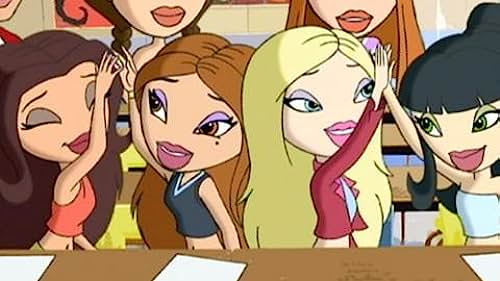
While maybe not considered part of the BCU, it would be a disservice not to mention MyScene. To keep up with the changing dollscape and compete with Bratz, Mattel launched a new line of edgier dolls with slightly bigger heads. While Barbie was making millions of dollars in VHS and DVD sales, MyScene was exploring the uncharted waters of the internet. Barbie (a character within the MyScene line) and her friends starred in 30 webisodes from 2002-2008, in addition to three MyScene films.
Fairies, Mermaids and Magic
Barbie still continued to insert herself into well known stories like Barbie in the 12 Dancing Princesses (2006) and Barbie in A Christmas Carol (2008). However, in 2005 the Babie writers really leaned into the idea that she can be anything, even a fairy. Barbie: Fairytopia put Barbie in a new world where she was creating her own original stories. She plays a wingless flower fairy named Elina, who is tasked with saving the enchanted land of Fairytopia.
With the success of Fairytopia came two sequels, Barbie Fairytopia: Mermaidia (2006) and Barbie Fairytopia: Magic of the Rainbow (2007), and two spin-offs, Barbie: Mariposa (2008) and Barbie: Mariposa & the Fairy Princess (2013). More importantly though, Fairytopia created one of the greatest memes to come out of the BCU: Bibble. The Everything Barbie Wiki page describes Bibble as Elina’s pet puffball and sidekick, but also claims Bibble is a distant cousin of Hitler and the creature’s favorite music genre is Turkish Jazz. While there seems to be no verification on those last two points, that small blue and purple ball of puff is filled with rage and sass that can only be expressed through its gibberish language and angry facial expressions.

Some of the meme-ability of Fairytopia comes from the fact that, somehow, the animation is worse than the previous films (which is saying something because the animation was never top-notch to begin with.) Bibble strangeness adds the charm, but something looks a bit off about Barbie as Elina. Maybe it’s the grandma updo or the insanely green eyes. Either way, the film’s sequels are so good, it makes up for the lackluster animation style.
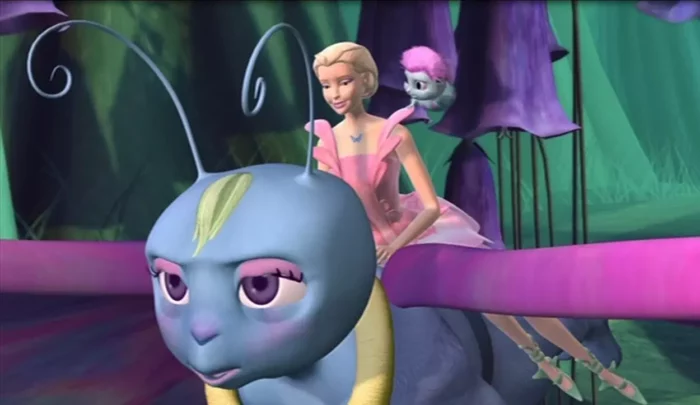
Kids watching Barbie’s Fairytopia era don’t really care about the cinematography or clunky dialogue. It’s the story. The universality of overcoming struggles, helping others, and working together for a common goal. There is good and there is evil, so choose good. These simple, but important, lessons should be instilled at a young age, but are also still relevant (and often forgotten) in adulthood.
The Barbie Cinematic Universe for a New Era
Barbs has kept busy these past 22 years with a total of 43 films. That’s the same number of leading roles as Brad Pitt. Where’s Barbie’s Oscar? (Sending my best to Gerwig and Margot Robbie.) But, it seems that in the circle of life, the web is what’s hot again, thus harkening back to those MyScene webisodes from 2002. The webseries Barbie: Life in the DreamHouse (2012-2015) stars Barbie, her friends, family, and America’s current favorite Himbo, Ken. Set up as a mock reality show, the satirical and self-aware comedy is genuinely hilarious, no nostalgia needed. The show was so good, it went from only being released on YouTube and the official Barbie website to airing on Nickelodeon and streaming on Netflix.
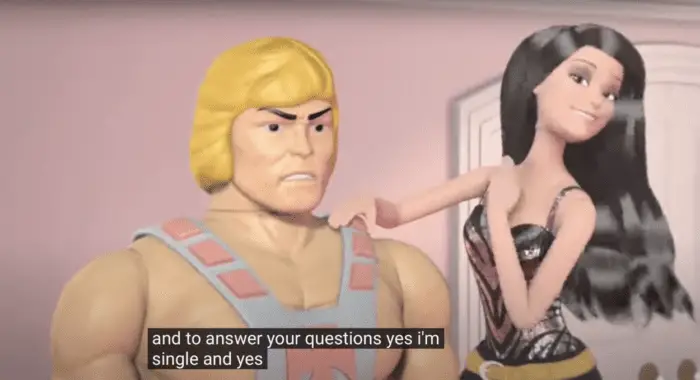
Around the same time, Barbie took to Youtube with more casual, vlog-style content. Her earlier vlogs showed her following popular trends, taking quizzes, and doing hair tutorials. Standard tween/teen girl stuff. They garner a view count of anywhere from 80k to 5.6 million (still less than Barbie’s movie trailers and clips that are also featured on the channel.) But, more recently, her content expanded beyond the silly into the topics of mental health, racism, and what it means to be an ally. The channel also features more than Blonde, blue-eyed Barbie — lack of diversity and representation long being one of the major critiques of Barbie. Mattel now considers themselves the most diverse doll line with 35 skin tones, 97 hairstyles, and 9 body types.
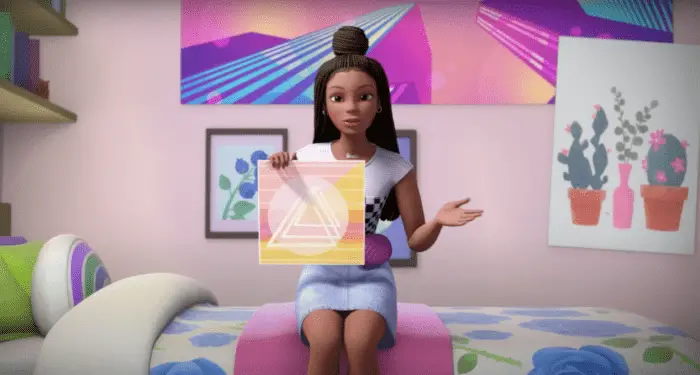
It might seem odd and capitalistic for a CGI doll to be speaking about such important subjects. Maybe it is. But Barbie is doing what she’s always done, adapting with the times. She’s still addressing the basics of kindness and friendship to young people, just with some added specificity and nuance. It’s cool that members of the LGBTQ community who grew up with Barbie, or maybe weren’t allowed to, are now seeing her attend pride. Or that kids of color can have matching box braids with their dolls. Even if it is all a ploy to sell dolls, at least the messaging is clear.
Even though it’s taken a while, now is the perfect time for Barbie to go live-action. A time where everybody can have their own favorite Barbie and Ken represented on screen. With a trusted writer/director, a stellar cast, loyal fanbase, and so much pink that it caused a global shortage, Barbie has everything she needs to be the movie of the summer.



